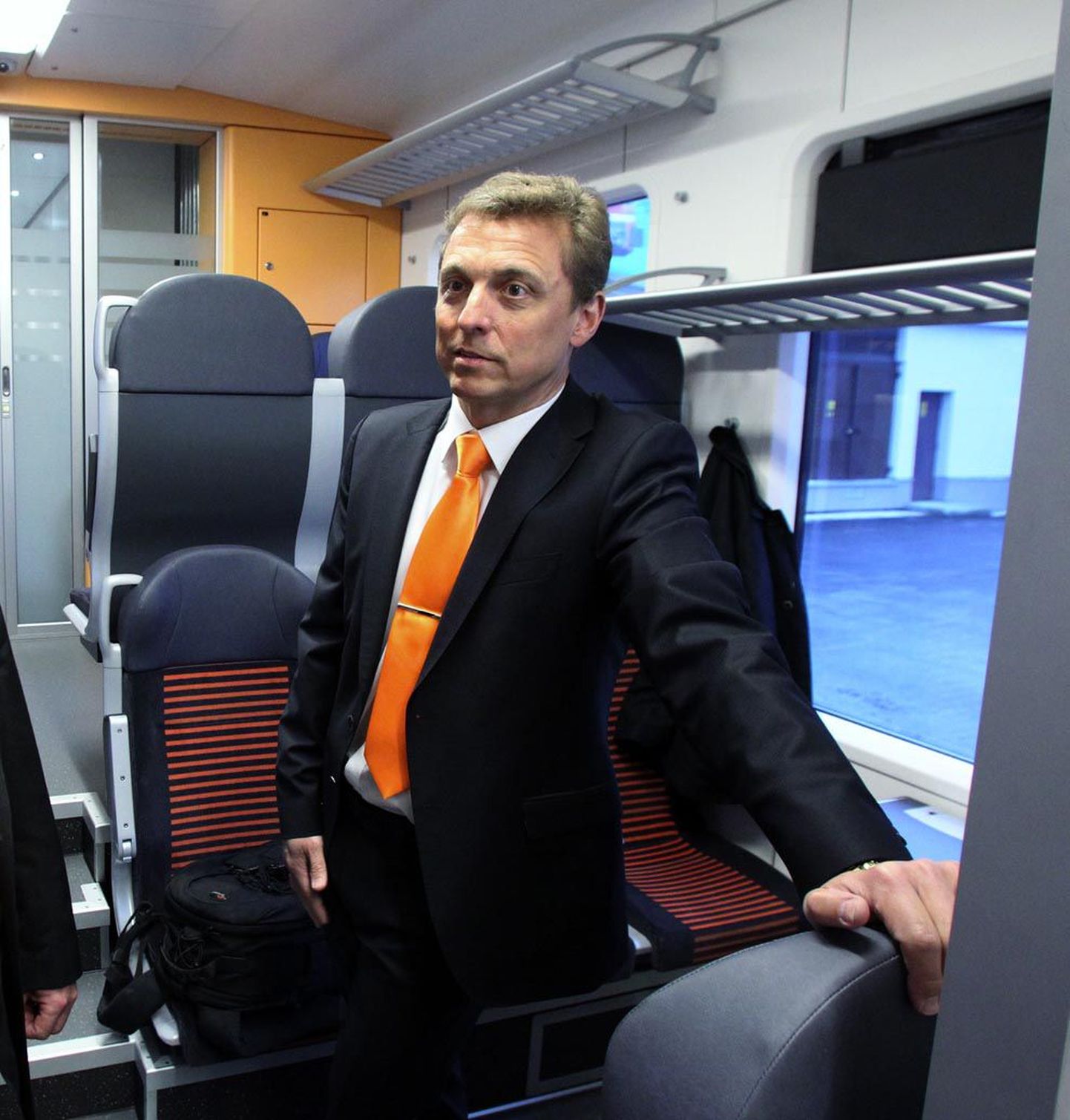
Elron chairman Toivo Promm, which long-distance lines surprised you by cars getting crowded? What are the direst of straits?

Elron chairman Toivo Promm, which long-distance lines surprised you by cars getting crowded? What are the direst of straits?
No real big surprises, really; but there was a bit more passengers overall than predicted by statistics. Not considering the many who bought no tickets, the preliminary information says the first four days of January had trains filled twice as full, year-on-year. That will hardly remain the case, however.
Even so, it’s positive with increase: then we have reason to seek for additional options, as the initial version was to purchase ten diesel trains. In 2007, we started to plan all this, together with Ministry of Economy and Communications.
The plan was to only purchase new electric trains with EU help; however, before we proclaimed the procurement, the government desired whole solution of the ministry – as Edelaraudtee presented nothing definite to acquire new trains.
How large are staff problems at Elron? This (Monday – edit) morning, Postimees got a call from a reader who wondered if communism was back – while riding from Tartu to Tallinn, no ticket seller was in sight...
This morning, we were supposed to have two customer attendants on major lines. Can’t rule out they didn’t reach everybody, but still the majority paid [for tickets] as ticket sales statistics exceed former figures about two times. With an abundance of passengers, it may happen that two assistants will not be enough.
Are all jobs now filled up?
Except for that sad situation at the Rapla line, when a train driver, due to a communication error, planned to be on the post at another time – with people put into replacement buses – all other lines have worked and the staff planned has been on board. We employ about 230 people. Due to the seven new trains to come, more will be added.
The Rapla line train departing at evening rush hour has been turned into an express not stopping at various small places from where people commute to work in Tallinn. Shouldn’t a state enterprise pursue regional politics so as to have rush hour trains stop in small settlements for people to get to work?
We are clearly pursuing regional policy; as already mentioned by CEO, amount of trips is up 50 per cent. This is a coin with two sides. While talking to people in Tartu, they say trains should not stop everywhere, as they want to get to Tallinn quick. Elron has talked to all county governments and, want it or not, certain compromises have been made. So now we have the more-often-stopping trains and the fast ones.
Tarbija24 was approached by folks from Hagudi who can now head home from Tallinn either 4:56 pm or 6:20 pm. The 5:35 train is no good any more, not stopping at their place any longer.
There may be some places where the schedule isn’t the most ideal; even so, this being such a major change, it is impossible to have all train users 100 per cent satisfied with schedules at once.
When, do you think, might technical glitches cease in trains, and everybody finding a seat?
At rush hours, there will never ever be seats for all. Many have travelled in Europe and elsewhere; nowhere is one always guaranteed a seat. But the other major glitches should cease by end of January.
You said train ride is a cheap alternative to bus, but – talking about a Tallinn-Tartu train ticket – how much of it is paid by the passenger, and how much is state subsidy?
Right now, the state covers over a half. Looking at Elron’s revenue, the state subsidises over a half, and I’m not totally sure. To Edelraudtee, however, the state paid 70 per cent.
So your subsidy is not two thirds as claimed by a bus company?
Not quite 2/3; due to the new trains and increased passenger flow, unit cost goes down, so own revenue percentage ought to increase. I think by year’s end we will strive towards 40 per cent. Andrus Ossip mentioned five million passengers as goal for the year; considering the initial days, this is doable.
Had the state more money to spare for trains, how long ones should they have gotten?
Four wagons is optimal anyway; makes no sense to buy six-car-trains, when these would only be needed two times a week. Four-car-trains would ride as general rule; should these be too full, a two-car-train can be attached. But, with six-car-trains – these can no longer be cut to two.